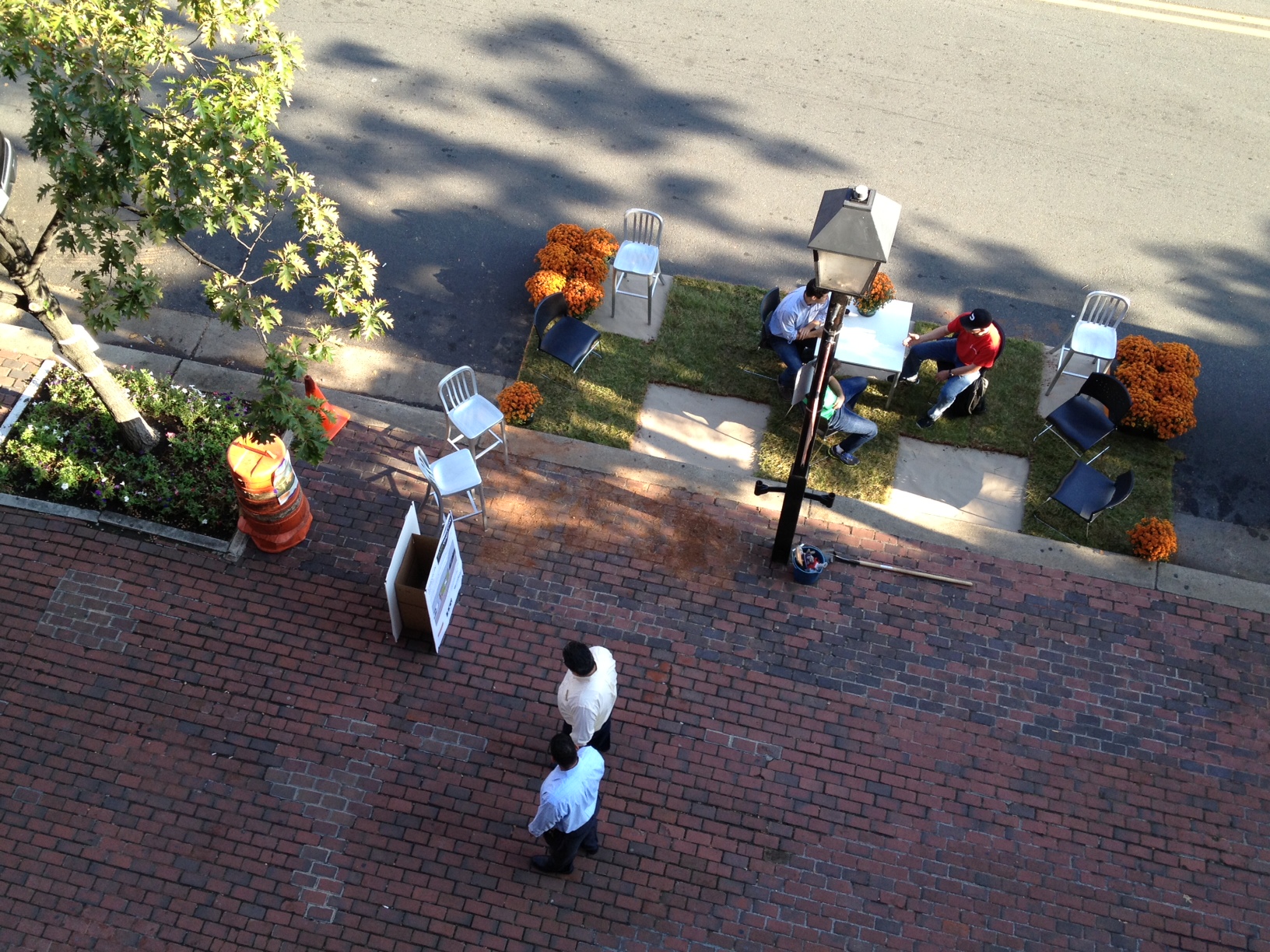On the new Plan.Place blog, the author describes the ways that small-scale, temporary projects can have a widespread, lasting impact on the way that our communities evolve and change.
In a post from the Plan.Place blog, the author explores the need to better allocate street space while acknowledging the difficulties that come with making visible, functional changes to a community. While the author commiserates with those who have "a hard time weighing the benefits of improving pedestrian and bicycle infrastructure against a potential increase in commute times or the threat of having an even harder time finding a parking spot," she argues the importance of evolving our streets along with the rest of the urban form. "The easiest, most effective way for people to understand the potential for a place (be it the road in front of their house or the empty lot down the street) to look and function differently is through actually showing them, using temporary installations rather than solely relying on renderings or precedents."
From PARK(ing) Day to pop-up bike lanes to Better Blocks projects, it is clear that there is value in testing concepts with the community, whether or not you have a long-term goal of a permanent project. The author includes several examples of projects big and small, and suggests experimenting with the urban form, on many scales. "If you’re considering improvements that could be easily demonstrated via a temporary project – curb extensions, bike lanes, valet parking, food trucks, more street trees, etc – why not take a chance and try it out before you and your community commit to a solution?"
"It doesn’t have to be expensive, or time-consuming. In the words of Janette Sadik-Khan, Commissioner of the New York City Department of Transportation from 2007-2013, 'if you’ve got a big, controversial project, think about lawn chairs.'"
FULL STORY: Please, Play in the Street: Urban Design for the Commitment-Phobe in All of Us

Analysis: Cybertruck Fatality Rate Far Exceeds That of Ford Pinto
The Tesla Cybertruck was recalled seven times last year.

National Parks Layoffs Will Cause Communities to Lose Billions
Thousands of essential park workers were laid off this week, just before the busy spring break season.

Retro-silient?: America’s First “Eco-burb,” The Woodlands Turns 50
A master-planned community north of Houston offers lessons on green infrastructure and resilient design, but falls short of its founder’s lofty affordability and walkability goals.

Test News Post 1
This is a summary

Analysis: Cybertruck Fatality Rate Far Exceeds That of Ford Pinto
The Tesla Cybertruck was recalled seven times last year.

Test News Headline 46
Test for the image on the front page.
Urban Design for Planners 1: Software Tools
This six-course series explores essential urban design concepts using open source software and equips planners with the tools they need to participate fully in the urban design process.
Planning for Universal Design
Learn the tools for implementing Universal Design in planning regulations.
EMC Planning Group, Inc.
Planetizen
Planetizen
Mpact (formerly Rail~Volution)
Great Falls Development Authority, Inc.
HUDs Office of Policy Development and Research
NYU Wagner Graduate School of Public Service


























